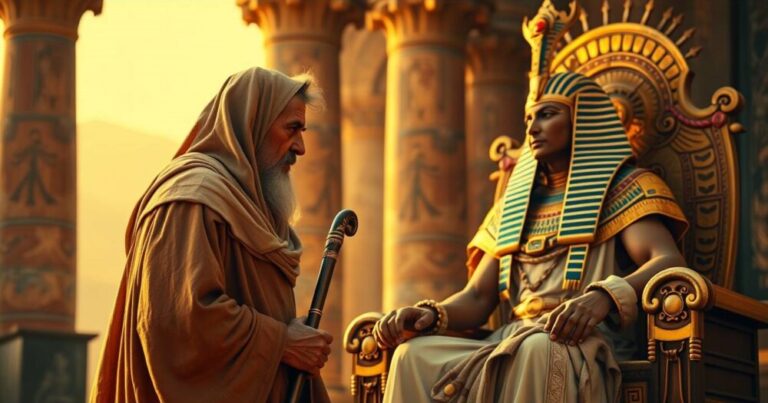Seeing the Light in the Darkness

In a recent article How Transparent is Your Aspaklaria? we explained how מידה כנגד מידה [middah k’neged middah] is a gift from the Holy One blessed be He. If we pay attention, especially to the ‘negative’ or unpleasant things that happen to us, we should be able to understand the deficiencies, shortcomings and weaknesses in ourselves that need fixing. We need to practice saying the following, “What just happened to me is just and good. In fact, it couldn’t be any better. Hashem is telling me to hold up a mirror and see that what just happened reflects a flaw in me that I need to fix.”
For example, if someone insults me for ‘no apparent reason’, I need to reflect and consider that I (perhaps recently) also insulted someone for ‘no apparent reason.’ And instead of getting upset at being insulted, I need to examine my life and find how I am guilty, regret my own bad conduct, apologize to the other person if possible and do heartfelt teshuvah. Or for example, if I accidentally dropped a glass and it smashed to pieces all over the floor, I need to know that I too am guilty of causing damage and making a mess, not necessarily on the physical plane, but certainly on the spiritual plane. This is the beauty of middah k’neged middah. When used correctly, we can use it as a springboard for correction and growth. All we need to do is to say to ourselves that somehow, in some way, what just happened is just and that we deserve it.
This is relatively simple to understand and readily acceptable to most thinking people, especially when the offense doesn’t appear to be too great. However, what are we tempted to do when the offense seems to us to be totally unjustified and way off the scale? At that point, we may not be so quick to accept the fact that Hashem is still running the world in the same way He ran it yesterday. When such egregiously terrible things happen to us or to those whom we love, we may have a very difficult time accepting the truth of middah k’neged middah. At such times, it becomes easier not to pick up the mirror, to blame the other as guilty and to proclaim ourselves as innocent. Such times are known as הסתר פנים [hester panim], the concealment of Hashem’s face, a time when it is difficult to perceive Hashem’s presence and involvement [השגחה, hashgachah] in the world or even in our lives.
But there are times of even deeper concealment known as הסתרה שבתוך הסתרה [hastarah she’betoch hastarah], a concealment within a concealment. Not only is Hashem concealing Himself, but the fact that He is concealing Himself is also concealed. An analogy will help. Let’s say that someone places a sheet over himself so that no one can actually see him. People know that he’s there because they can see how the sheet is not lying flat and that there’s obviously the presence of a body underneath it. However, if someone put a sheet over himself in such a way that when you look at the sheet you can’t tell that he’s hiding underneath it, that’s hastarah she’betoch hastarah. When Hashem does this, it is very difficult to perceive His hashgachah in the world. But according to the lyrics of the now famous song (Likutei Moharan 56:3, Likutei Tefillot 56:5): וְאַפִילוּ בְּהַסְתָּרָה שֶׁבְּתוֹךְ הַסְתָּרָה בְּוַודַאי גַם שָׁם נִמְצָא הַשֵם יִתְבָּרַךְ (And even with hastarah she’betoch hastarah, for sure, also there Hashem, may He be blessed, is found).
As we know, the customs of mourning intensify during the final nine days leading up to Tisha b’Av climaxing on Tisha b’Av itself when we accept upon ourselves the five levels of mourning: prohibitions against wearing leather shoes, anointing oneself, washing or bathing oneself, eating or drinking, and having marital relations. There is no day even remotely like this day in the entire year: mourning, reciting Sefer Eichah [Lamentations], sitting on the ground or on short stools, and reading elegies [קינות, kinnot] that cover the full gamut of the most difficult periods of time in our history, i.e. the destruction of the First and Second Temple, the Crusades, the Expulsion from Spain, and the Holocaust (to name a few). It’s not a pleasant day. In a kinnah on the Holocaust written by R' Avraham Rozenfeld, we read the following: “Pious individuals sat silent on the ground asking what their sin was, and why judgment was passed without any pity” (Lookstein Edition translation).
And we continue to ask that same question.
We realize that even to ask the question is often considered taboo and that the mere suggestion of wrongdoing on our part is considered the height of chutzpah; nevertheless, in awe of our righteous martyrs who suffered unspeakable horrors during World War II and in light of what we have written above, we tread lightly and cautiously whisper what may be a partial answer to that question.
What do trapping, cooking, plowing, dyeing, sewing, shearing, writing and sorting all have in common? It’s rather obvious, isn’t it? They are eight of the 39 forbidden creative activities forbidden to the Jewish People on Shabbat. But there is another equally valid answer. They are eight of many other cruel acts perpetrated against us during the Holocaust. We were trapped inside ghettos, cattle cars and concentration camps. We were cooked inside crematoria. We were plowed under the ground in mass burials. What about sewing and dyeing? Josef Mengele conducted numerous ‘medical experiments’ on the incarcerated Jews, including the stitching together of live organs and injecting various chemicals into their eyes in an attempt to change their color. As for shearing, we had our hair, beards and peot cut and shaved off. We had identification numbers written into our skin. And as for sorting, the notorious selection process on the platform at Auschwitz easily comes to mind. Other examples could be given, but this will suffice to illustrate the point. Whether we are willing to admit it or not, the principle of middah k’neged middah leads us to a clear answer to the question of what was, at least in part, our sin. All of these cruel and barbaric acts point to laxity regarding the laws of Shabbat. (There are other reasons for the Holocaust, of course, and there is the question of why the righteous suffered along with the not-so-righteous, but both of these topics are beyond our scope here.)
This understanding fits with what we read in the Torah regarding the reasons for the curses that would come upon the Jewish People if we weren’t faithful to His covenant. In pure middah k’neged middah fashion, three times (Vayikra 26:23-24, 27-28, 40-41), Hashem uses the word קרי [keri, indifference, casually] to describe our betrayal to the covenant, and three times Hashem responds by stating that He would likewise behave toward us with keri.
Every morning, when we wind the straps of tefillin around our fingers, we recite the following two verses from Hoshea 2:21-22: וְאֵרַשְׂתִּיךְ לִי לְעוֹלָם וְאֵרַשְׂתִּיךְ לִי בְּצֶדֶק וּבְמִשְׁפָּט וּבְחֶסֶד וּבְרַחֲמִים׃ וְאֵרַשְׂתִּיךְ לִי בֶּאֱמוּנָה וְיָדַעַתְּ אֶת־יְיָ (And I will betroth you to Me forever, and I will betroth you to Me in righteousness, justice, loving-kindness and mercy, and I will betroth you to Me in faithfulness [emunah], and you will know Hashem). Why do these verses repeat “I will betroth you to Me” three times? After all, Hoshea could have written, “I will betroth you to Me forever, in righteousness, justice, loving-kindness, mercy and emunah. The Radak explains: וזכר שלשה פעמים וארשתיך כנגד שלשה גליות שגלו ישראל גלות מצרים וגלות בבל וזה הגלות שאנחנו בו היום ([The prophet] mentioned ‘I will betroth you’ three times corresponding to the three exiles experienced by the Jewish people: the exile of Egypt, the exile of Babylon and the exile that we are in today [i.e. Rome]). He goes on to explain that each of the descriptions is unique to its particular exile. The redemption from Egypt was not forever, but the final redemption will be. The redemption from Babylon was flawed because we didn’t act righteously, justly and mercifully to each other. This too will be rectified at the end. And the redemption from Rome (which we anticipate daily) will also rectify the flaw in emunah that is at the center of our current exile. But when we rectify our flaw in emunah, we will then come to really know Hashem.
The Holocaust was a time of intense hastarah she’betoch hastarah, possibly even hastarah she’betoch hastarah she’betoch hastarah. We learned above that it is almost impossible to find Hashem in such situations. It is not impossible, it is just very difficult. And the only way to find Hashem in such situations is through emunah. And as we just read, that is the very flaw that we need to rectify in order to experience the final redemption. And since we’re still in exile, we haven’t completed its rectification.
Let’s make this the focus of these nine days, to really work at finding Hashem in absolutely every situation, and then perhaps we will merit the complete redemption this year.






